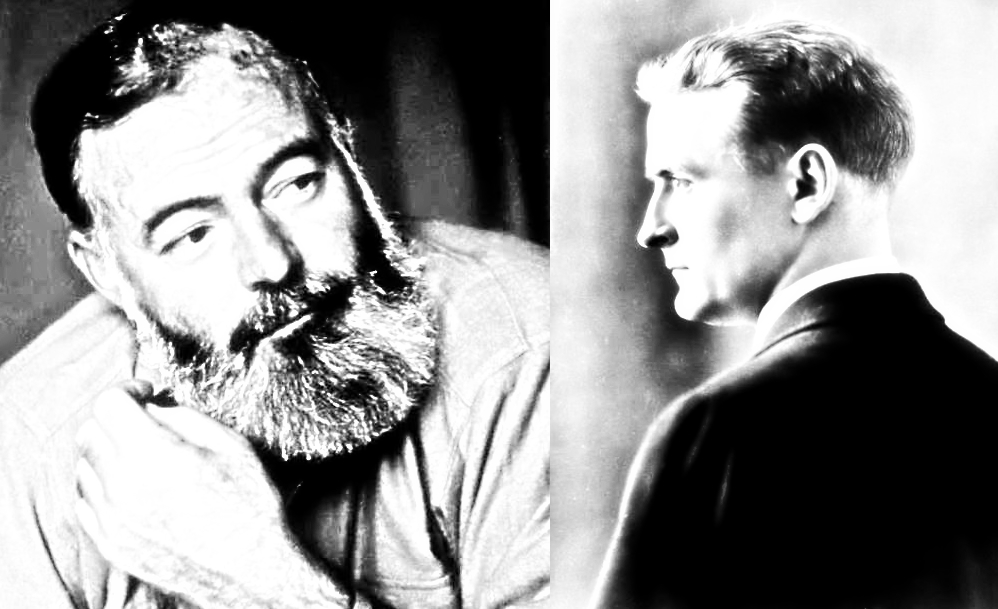In a recent post, I detailed the life and times of Robert Bloch, an important writer in the history of the horror genre, and somebody who contributed a great deal to multiple formats of writing—short stories, screenplays, etc. One of his most important works, Psycho (1959), is a mainstay of the horror genre and has spawned multiple movies and television shows.
Today, we are going to take a look at the book and its source of inspiration, so that you—the writer—might find some insight into how inspiration works.
A Psycho summary
Psycho details the story of Norman Bates, who is a caretaker at an off-the-beaten-path motel in Fairvale. He is dominated by his mother, who refuses to let Norman out of her peremptory grip, and they argue about the flailing motel, whose business has been recently rundown by the relocation of a nearby highway.
After his mother murders Mary, a woman who is on the run for stealing cash from her real estate client, Norman disposes of the body and continues caring for the motel…and its aging matron. After the woman’s sister, Lila, Marion’s ex-boyfriend, Sam, and a private investigator, Arbogast, come looking for the now deceased woman, Norman’s mother strikes again and kills Arbogast with a razor while the former two are out investigating.
After further inquiry by Lila and Sam, some revelations occur: Norman’s mother has been dead for years, and Norman spent time in a mental institution. After Lila finds the corpse of Ms. Bates in the fruit cellar, she is attacked by Norman—who is wearing his mother’s clothes. Norman is stopped by Sam and the explanation given is that Norman turned into his mother after a bout of matricide in which he poisoned her and her lover out of jealous rage.
Confined to a mental institution for life, Norman psychologically transforms into his mother completely and deigns to prove that he wouldn’t dare even hurt a fly.
How inspiration impacts our writing
Inspiration can be a tricky thing to conjure. You may have to be in the exact right mood, or maybe you have to be lying in bed in the morning, or maybe you have to be taking a shower…or perhaps you are just out mowing your lawn one day and inspiration comes and smacks you right in the head with a great idea.
Whatever it is that works for you, works for you.
Psycho (1959) is famously inspired by the true crimes of Ed Gein, which also have a relationship between multiple personality disorder and murder, as Gein had murdered two women and seemingly set himself about crafting a skin suit after his own mother’s heart. In this case, inspiration came from real-life scenarios as well as some past stories of Bloch’s earlier works that also dealt with multiple personalities and grim situations.
As written by Galaxy Press: “In this regard, Robert Bloch’s protagonist, Norman Bates, was much like Gein. On that point, Bloch realized, ‘I’d discovered how closely the imaginary character I’d created resembled the real Ed Gein both in overt act and apparent motivation’” (Galaxy Press).
The book was written during Bloch’s six-year span in Weyauwega, Wisconsin. As Bloch later stated, he based Psycho on a “situation rather than any person, living or dead…”
As Shane Nyman writes in an article for Post Crescent: “Living only about a 35-minute drive from Plainfield, the already-accomplished Bloch read about the discoveries at the Gein family farm when it hit the papers in 1957. Two years later, the world was introduced to Norman Bates.”
And, yet, Bloch also disputes the claims of his immediate knowledge of the incident. He wrote in his 1993 memoir that he knew “very little” of Gein at the time of his writing, and only realized the connection years later when writing an essay about Gein. He soon realized that there were lots of similarities between his novel and the case.
I think, in this way, inspiration was a sort of parallel thinking in the ether. It was the right time and place for the story to happen, and so was the Gein case. It’s horrible to think, but lots of murders and books are written at the same time, and some of them build traction with the public and some don’t build traction at all. It’s an Overton Window of sorts where whatever is happening in the zeitgeist propels a story to success, but two sources of inspiration can happen in tandem.
Conclusion
Regardless of how you are inspired—whether by true crime events now or later—inspiration can bring forth interests that we already have and allow them to proliferate on the page. Bloch loved true crime, such as Jack the Ripper and Lizzie Borden, so it makes sense that inspiration came to Bloch in the form of his interests.
He was also devoted to strange fiction and tales of the macabre, which even featured his mentor’s death:
The Library of America states that: “One of the stories Bloch wrote while (H.P.) Lovecraft was alive featured Lovecraft as a character, killed by a monster. Weird Tales required Bloch to get the victim’s permission before publishing the story, and Lovecraft authorized Bloch ‘to portray, murder, annihilate, disintegrate, transfigure, metamorphose, or otherwise manhandle the undersigned in the tale entitled THE SHAMBLER FROM THE STARS’” (Library of America).
In so many words, find your inspiration where your love is at, whether that be stories of killers in the Midwest, or stories where you yourself are doing the killing.
Works Cited
“The Backstory to Robert Bloch’s Psycho.” Galaxy Press. Galaxy Press, inc.
Nyman, Shane. “60 years ago Norman Bates and ‘Psycho’ were born in small-town Wisconsin.” March 5th, 2019. Post Crescent. Web: https://www.postcrescent.com/story/entertainment/2019/03/05/robert-bloch-wrote-psycho-weyauwega-wisconsin-60-years-ago/2380385002/
“What Robert Bloch owes to H.P. Lovecraft.” Library of America. Accessed on April 6, 2023. Web: https://blog.loa.org/2010/09/what-robert-bloch-owes-to-h-p-lovecraft.html







